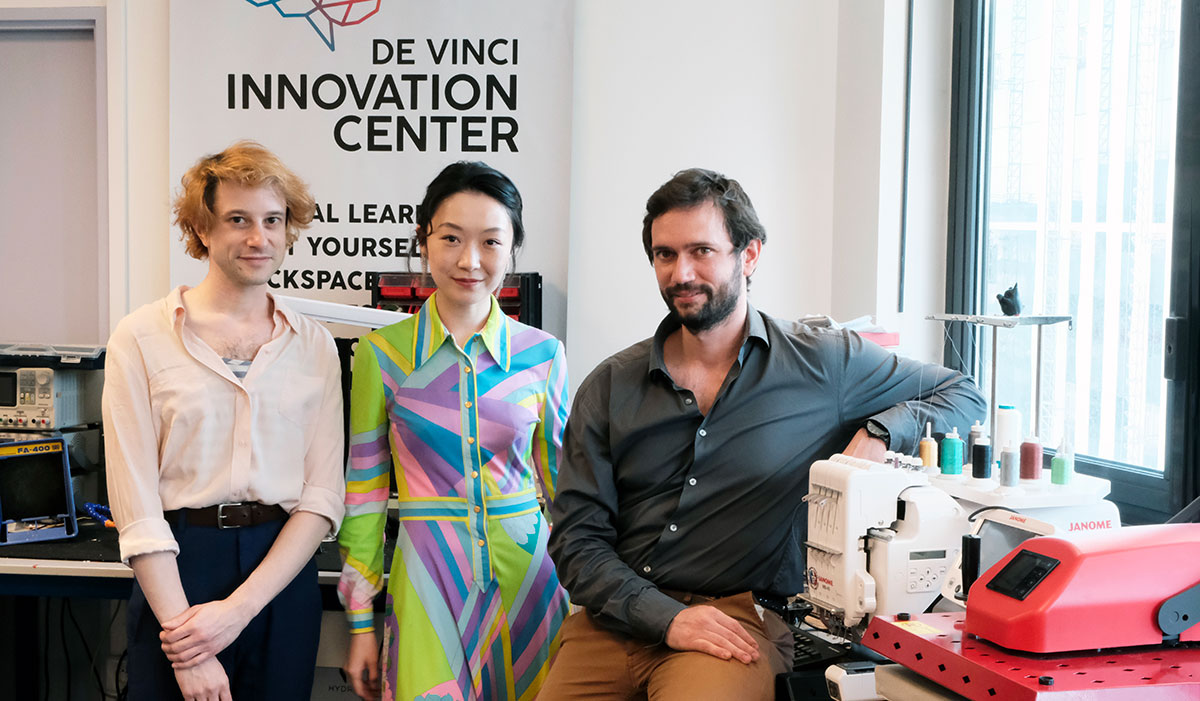Unleash the subconscious power through AI to explore high-dimensional space and be connected to Mother Earth even more intensively as a human being. It’s the aim of The Wandering Mind, a dream research project that bridges art and science at De Vinci Innovation Center.
The Pole Leonard de Vinci’s transdisciplinary research lab was home to MIT graduates and collaborators Xin Liu and Gershon Dublon during a three month-long research artist residency at DVIC. The program, called “The wandering mind: Feel the pulse of Earth”, focuses on neuroscience and artificial intelligence to create multi-sensory experiences while using AI-guided and managed experimentation to navigate through global environmental data in sleep states.
Shaping a productive art and science collaboration at DVIC
Xin Liu was chosen as one of Forbes’ top Under 30 Asia list – Class of 2020 in The Arts. She is the Arts Curator in the Space Exploration Initiative in MIT Media Lab, a New INC member in New Museum and a studio resident in Queens Museum. She is also an artist-in-residence at SETI Institute.
“This project at DVIC is focusing on the research aspect of this programme. With the help of AI, the idea is to create a soundscape in which a sleeping person will be guided through that soundscape while sleeping and where we can interfere with the person’s dreams”, Xin explains.
The sounds used to create the AI-guided landscape are collected using Radio Aporee exploration.
“We are interested in using our subconscious brain, the sleeping brain, to understand complicated systems that our awake mind can not do.”
The project’s final objective is to develop a dream media or platform where dreams could be curated and manipulated just like ordinary content pieces to help people better interact with the global environment and, through doing so, better understand who they are.
How sleep-applied AI can help ESILV students to understand human brain better
The Wandering Mind project at DVIC holds opportunities for a PhD student (Yliess Hati) and two interns from ESILV, Thomas Juldo and Vincent Thevenin. But the bigger picture is about the DVIC community acquiring a better understanding of how the human brain works through AI and sleep research.
“We transform complex systems into complicated models, and in this work, we try to explore how AI can help us in modelling very complex systems and compare these findings with our natural brain ability to manage complexity, especially while dreaming.
Most of our cognitive and learning processes occur when we are sleeping”, explains Clement Duhart, founder of De Vinci Innovation Center.
“In this project, we try to merge cognitive science and AI to try to create a kind of shared experience between a human and a machine based on sound. Students can understand what it means to perceive something and how our brain works, learns and how sleep is something much more complex than just a switch on/off for human brain.”
The project was initially selected by Ars Electronica and the European ARTificial Intelligence Lab in 2019 for Xin and Gershon’s first residencies in Argentina and Austria. A research publication called “The Wandering Mind: Planetary Scale Dreaming in Latent Spaces” will be presented at the International Conference on New Interfaces for Musical Expression (NIME ’21) in Shanghai, China.
This post was last modified on 13 April 2021 1:40 pm






